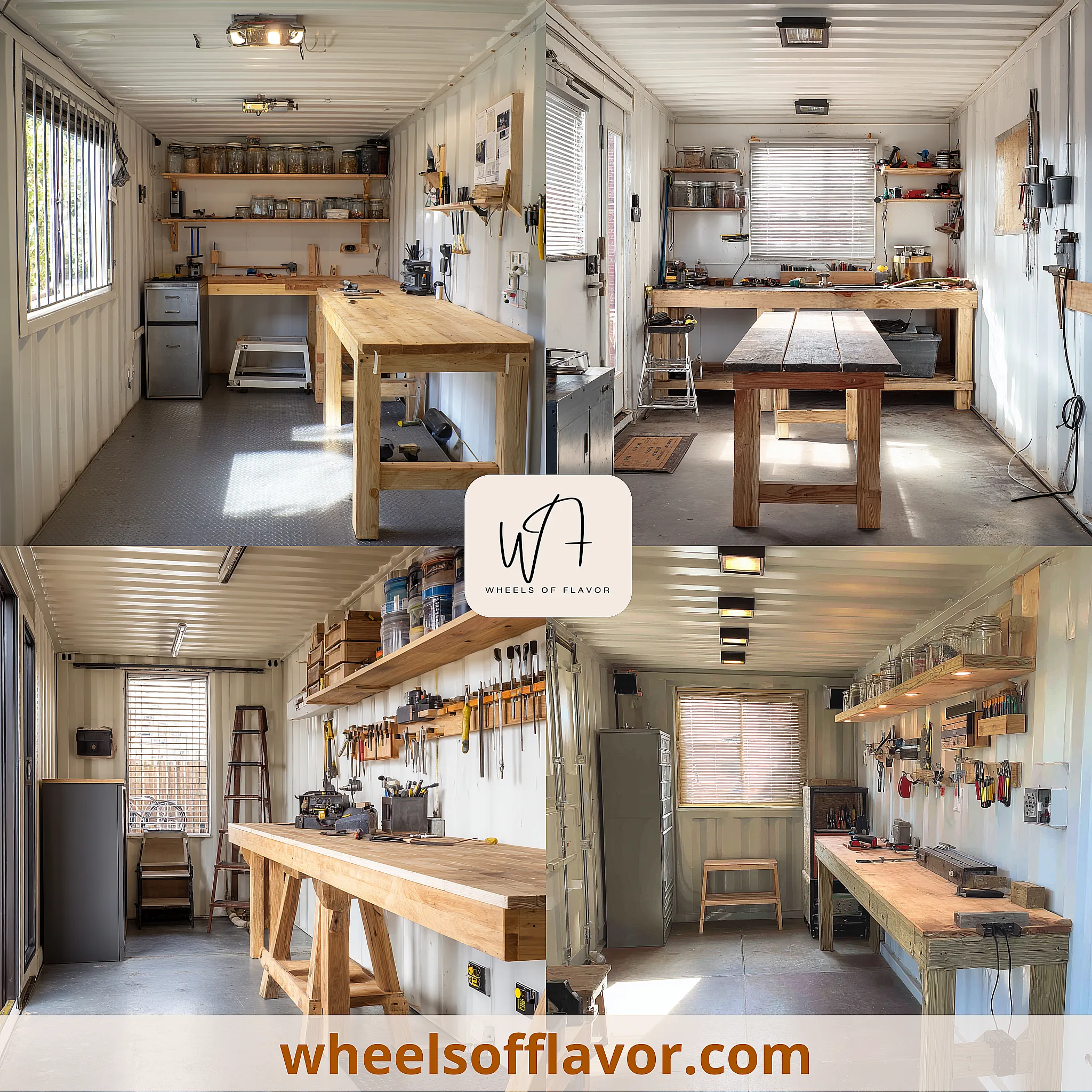
Transforming shipping containers into workshops is a brilliant and sustainable trend gaining momentum in home design. These versatile metal boxes offer durability, affordability, and endless customization potential for anyone looking to create a functional workspace. Whether you’re a hobbyist, artist, or professional, a shipping container workshop can be tailored to your needs, providing a secure and weather-resistant environment. In this article, we explore innovative shipping container workshop ideas to help you build the perfect creative haven. From insulation and layout to storage and aesthetics, we cover key aspects to consider. Embrace this eco-friendly approach to workspace design and unlock the possibilities of repurposing industrial materials. For related insights, check out this guide on [container homes](https://www.architecturaldigest.com/story/shipping-container-homes-trend) from Architectural Digest. With rising interest in sustainable living, now is the time to dive into these ideas and craft a workshop that inspires productivity and creativity.
Essential Shipping Container Workshop Ideas for Setup
Starting with the basics, key shipping container workshop ideas include proper insulation, ventilation, and structural modifications. Insulation is crucial for temperature control; use spray foam or rigid panels to keep your workspace comfortable year-round. Ventilation ensures air quality—install windows, vents, or exhaust fans to prevent moisture buildup. For structural changes, consider adding doors, windows, or skylights to enhance natural light and accessibility. Electrical wiring and plumbing should be handled by professionals to meet safety standards. Layout planning is vital; designate zones for different activities, such as a workbench area, storage section, and relaxation corner. Use durable materials like epoxy floors for easy cleaning and metal shelving for organization. These foundational steps set the stage for a functional workshop. Incorporate energy-efficient lighting, such as LED fixtures, to reduce costs. For more budget-friendly tips, explore our post on DIY workspace hacks. With thoughtful setup, your shipping container can become a productive retreat.
Creative Shipping Container Workshop Ideas for Customization
Customization elevates your shipping container workshop ideas, allowing personal touches that reflect your style and needs. Paint the exterior with rust-resistant coatings in colors that complement your property; earthy tones or bold hues can make it stand out. Inside, install modular furniture, such as fold-down tables or adjustable shelves, to maximize space. Add a personal touch with wall art, plants, or a small seating area for breaks. For specialized workshops, like woodworking or metalworking, incorporate built-in tool storage and dust collection systems. Soundproofing can be added for noisy activities, using acoustic panels or extra insulation. Consider multi-level designs if height allows; a mezzanine level can provide extra storage or a lofted workspace. Use reclaimed materials for a sustainable vibe, such as pallet wood for décor. Lighting plays a big role—install task lighting over work areas and ambient lights for a cozy atmosphere. These creative touches make the space uniquely yours and enhance functionality. Tailor it to your hobbies for a workshop that inspires daily use.
Budget-Friendly Shipping Container Workshop Ideas
Implementing shipping container workshop ideas on a budget is entirely possible with smart planning and DIY efforts. Start by sourcing a used container, which can cost significantly less than new ones; prices vary based on size and condition. For insulation, opt for affordable options like fiberglass batts or reflective barriers instead of high-end materials. DIY installation can save on labor costs—watch online tutorials for guidance. Furnish the space with second-hand or repurposed items, such as old cabinets for storage or a discarded table as a workbench. Electrical work might require a professional, but you can handle simpler tasks like painting or shelving yourself. Use solar panels for off-grid power to cut long-term expenses. For flooring, consider inexpensive epoxy coatings or interlocking tiles. Keep the design simple to avoid overcomplicating things; a minimalist approach often works best. Regularly maintain the container to prevent rust and damage, extending its lifespan. With creativity, you can create a functional workshop without breaking the bank. Check out more money-saving tips in our budget decor section.
Conclusion
In summary, shipping container workshop ideas offer a practical and innovative solution for creating dedicated workspaces. From essential setup steps like insulation and ventilation to creative customizations and budget-friendly approaches, these projects are accessible to everyone. Embracing this trend not only provides a functional area for hobbies or work but also contributes to sustainability by repurposing materials. As urban spaces shrink and eco-consciousness grows, shipping containers will likely become even more popular in home design. Looking ahead, consider integrating smart technology, such as automated lighting or climate control, to enhance your workshop. Start small with one container and expand as needed—the possibilities are endless. Whether you're building a woodshop, art studio, or garage, these ideas empower you to design a space that fuels creativity and productivity. Take action today by sketching out your plan and gathering materials. Your dream workshop is within reach, ready to transform how you work and create.
Frequently Asked Questions
Q: How much does it cost to convert a shipping container into a workshop?
Costs vary based on size, condition, and customization. A basic conversion can start from $5,000 to $20,000, including the container purchase, insulation, wiring, and simple finishes. DIY efforts can reduce expenses, while high-end features like plumbing or premium materials may increase it. Always budget for permits and professional help if needed.
Q: What are the best insulation methods for a shipping container workshop?
Effective insulation methods include spray foam for seamless coverage, rigid foam panels for ease of installation, or batt insulation for cost-effectiveness. Spray foam provides excellent thermal and moisture barrier but is pricier. Ensure proper ventilation to prevent condensation. The choice depends on your climate and budget; consult a professional for optimal results.
Q: Can I add windows and doors to a shipping container workshop?
Yes, adding windows and doors is common and enhances functionality. Use reinforced cuts to maintain structural integrity, and install pre-hung doors or custom windows. Consider placement for natural light and access; for example, a large roll-up door facilitates moving equipment. Always hire a skilled welder or contractor to ensure safety and compliance with building codes.

